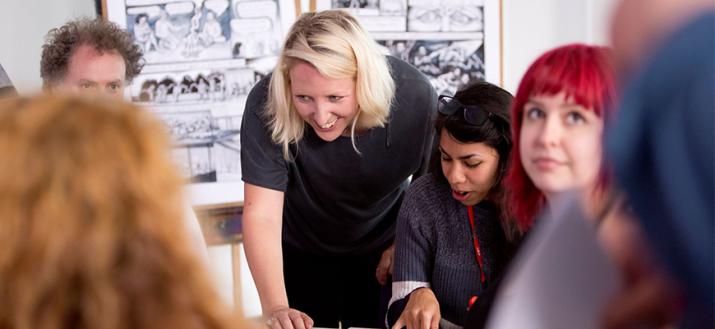Stay up to date with our work
Our monthly updates are a great way for you to stay up to date with our work, events, and higher education news.
Last updated on Tuesday 20 Dec 2022 at 10:24pm

Dr Nick Lancaster, Director of Innovation & Enterprise at the University of Bedfordshire, outlines how universities are the ideal channel for regional regeneration through collaborative research and development.
Regional regeneration isn’t new. Over the years, governments have tried various means and delivery mechanisms to help grow jobs, attract investment or exploit resources.
Yet persistent problems mean this regeneration is often unsustainable and short-term. To reverse this trend, we need the involvement of institutions that are adapted to their local areas, with access to the skilled talent, infrastructure and other resources needed to help their regions flourish. This is where universities have a vital role to play.
Regeneration funding often takes the form of subsidies delivered by intermediary agencies who then rely on others to come up with the new, innovative ways to grow the economy.
More often than not, those subsidies do not actually sway a company's long-term decision about where to locate, whether to expand, or whether to invest. The subsidy is often a waste of public resources – a taxpayer-financed handout for no gain – because companies only looking for subsidy or low-taxation will move in and move out with equal haste.
The way to deal with this problem is to offer solutions to real business issues that affect growth; these are well known already:
That’s why we believe that universities are best placed to deliver regeneration and redevelopment funding. For instance, the University of Bedfordshire has been involved in the delivery of over £20m in European Structural and Investment Funds (ESIF) in the past five years, and external independent evaluation has shown that this has delivered over £100m in regional growth and created thousands of jobs.
In fact, for every £1 received in income from relevant sources, the University of Bedfordshire generates approximately £6.50 in net additional gross value added.
Universities are more than just a reflection of the region they sit in; we are a driver of growth, change, employment and research and development (R&D) roadmap ambitions for science, research and innovation.
A university is a physical representation of place-based policy beyond the simple footprint of the number of employees, or student spending in local restaurants.
Universities are adapted to their local areas; they draw from, add to and update the regional skills base, they involve the major regional stakeholders such as local authorities and large employers as part of efficient multi-level governance systems, and a university’s evidence-based approach attracts significant inward investment.
Regional regeneration and development needs vary, so university structures and missions across the country are already set up to match those requirements. Reflective of our physical location and skills base, we are apolitical and impartial, and are utilised dependent on regional needs.
In our region, the needs are a microcosm of the needs of the country. To address access to skilled staff talent, we delivered the European Social Fund (ESF) Time2Grow programme, which gave small or medium-sized enterprises (SMEs) a skilled graduate for three months to work on a known business problem. Despite the impacts of repeated lockdowns, 60% of participants on Time2Grow secured permanent, graduate-level employment.
The outcome proves that short-term funded engagement between universities, businesses and graduates has a significant impact on regional economic growth, helping to attract and retain talent across the region.
To provide organisations with access to the ecosystem of innovators and inventors, we are running our third iteration of European Regional Development Fund (ERDF)-funded Innovation Bridge, directly connecting businesses who want to innovate with our staff of scientists, technologists, designers, professors and business school leaders.
Innovation Bridges has delivered consultancy and R&D assistance to over 500 SMEs across the South East Midlands, Oxfordshire, Cambridge and Peterborough area.
However, innovation isn’t just for those established corporate clients. Our ERDF projects have also helped create 81 graduate start-ups, turning over 12.5 million and employing over 590 people in the region in 2019 alone.
Regional drivers affect what each university does and how it delivers. To assist the South East Midlands Local Enterprise Partnership (SEMLEP) Creative and Cultural key sector, the University of Bedfordshire’s TestBeds project supported local artists in creating new offers and applying for funding grants worth over £700,000 – as well as working with 23+ grassroots organisations to develop place-based projects, which are responsive and meet local need. We helped 31 local cultural businesses submit and win funding to bring jobs and new products to Bedfordshire.
To access digital infrastructure, we deliver support such as the ERDF-funded Productivity Escalator (designed to help businesses make better use of broadband), but to help innovators who want physical infrastructure, we connect those in need with facilities such as the Catesby Wind Tunnel, Silverstone, Diamond Light Source, and to other universities in the area with relevant hardware.
The network of universities in each region is part of the R&D infrastructure that is underutilised when regeneration funding is delivered by advisors without local knowledge and connections.
Universities are best placed to address national and global Grand Challenges by sharing knowledge between our highly-skilled staff, the private sector and the public sector for the betterment and growth of the regional and national economy to help the UK ‘build back better’ faster.
Our monthly updates are a great way for you to stay up to date with our work, events, and higher education news.